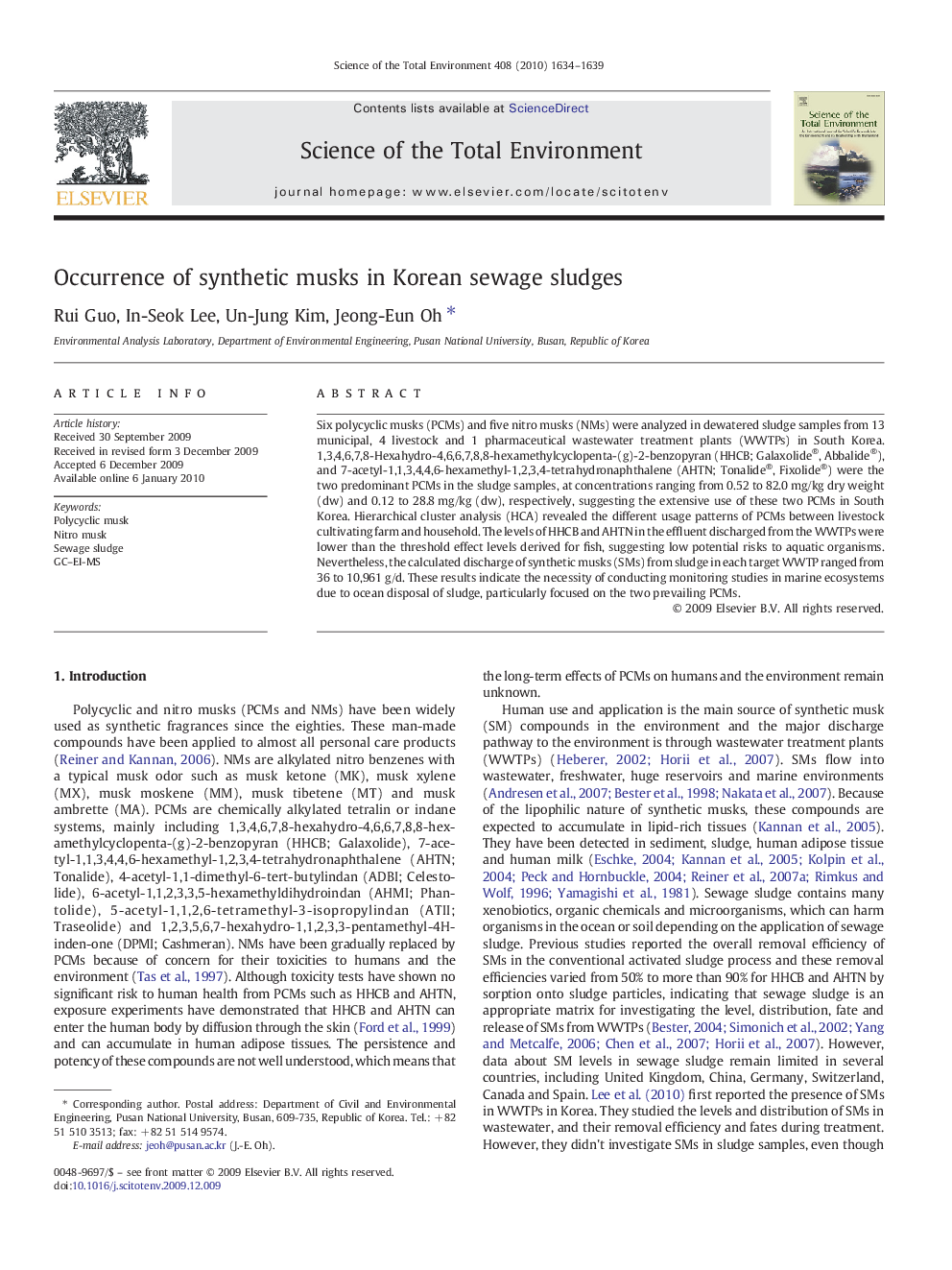| Article ID | Journal | Published Year | Pages | File Type |
|---|---|---|---|---|
| 4432068 | Science of The Total Environment | 2010 | 6 Pages |
Six polycyclic musks (PCMs) and five nitro musks (NMs) were analyzed in dewatered sludge samples from 13 municipal, 4 livestock and 1 pharmaceutical wastewater treatment plants (WWTPs) in South Korea. 1,3,4,6,7,8-Hexahydro-4,6,6,7,8,8-hexamethylcyclopenta-(g)-2-benzopyran (HHCB; Galaxolide®, Abbalide®), and 7-acetyl-1,1,3,4,4,6-hexamethyl-1,2,3,4-tetrahydronaphthalene (AHTN; Tonalide®, Fixolide®) were the two predominant PCMs in the sludge samples, at concentrations ranging from 0.52 to 82.0 mg/kg dry weight (dw) and 0.12 to 28.8 mg/kg (dw), respectively, suggesting the extensive use of these two PCMs in South Korea. Hierarchical cluster analysis (HCA) revealed the different usage patterns of PCMs between livestock cultivating farm and household. The levels of HHCB and AHTN in the effluent discharged from the WWTPs were lower than the threshold effect levels derived for fish, suggesting low potential risks to aquatic organisms. Nevertheless, the calculated discharge of synthetic musks (SMs) from sludge in each target WWTP ranged from 36 to 10,961 g/d. These results indicate the necessity of conducting monitoring studies in marine ecosystems due to ocean disposal of sludge, particularly focused on the two prevailing PCMs.
